Universal Serial Bus (USB) interface computer connection pressure sensing devices.
Products
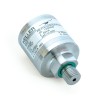 41X Low Range Digital Output Pressure Sensor - Low pressure sensor with a USB, RS232 or RS485 digital output interface for measuring low range gauge or differential pressures from 10 to 300 mbar.
41X Low Range Digital Output Pressure Sensor - Low pressure sensor with a USB, RS232 or RS485 digital output interface for measuring low range gauge or differential pressures from 10 to 300 mbar.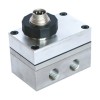 PD39X Twin Absolute Digital DP Sensor - Digital pressure sensor with 3 separate channels for measuring P1, P2 and DP readings plus 2 temperature channels.
PD39X Twin Absolute Digital DP Sensor - Digital pressure sensor with 3 separate channels for measuring P1, P2 and DP readings plus 2 temperature channels.
 UPS-HSR USB Pressure Sensor with High Sample Rate Logging
UPS-HSR USB Pressure Sensor with High Sample Rate Logging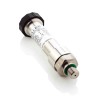 33X High Accuracy Digital Output Pressure Sensor
33X High Accuracy Digital Output Pressure Sensor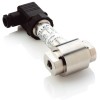 PD33X Digital Differential Pressure Sensor
PD33X Digital Differential Pressure Sensor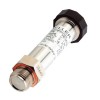 35X Flush Diaphragm Digital Output Pressure Sensor
35X Flush Diaphragm Digital Output Pressure Sensor
Applications
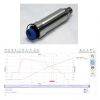 70,000 psi usb pressure sensor for calibration use with hydraulic screw press and PC computer - An ultra high range digital pressure sensor for calibration use to measure pressure of hydraulic oil over a range of 0 to 70,000 psi g from the Autoclave F-250-C female process connection, and sending the corresponding pressure reading through USB interface to the PC monitoring and logging software.
70,000 psi usb pressure sensor for calibration use with hydraulic screw press and PC computer - An ultra high range digital pressure sensor for calibration use to measure pressure of hydraulic oil over a range of 0 to 70,000 psi g from the Autoclave F-250-C female process connection, and sending the corresponding pressure reading through USB interface to the PC monitoring and logging software. Hydroelectric penstock 10 barg USB interface computer data-logging pressure sensor - A computer data logging pressure sensor for hydroelectric penstock use to measure fluctuating pressures of freshwater over a range of 0 to 10 bar g from the G1/4 male process connection, and sending the corresponding reading through the USB interface via the weatherproof cable electrical connection.
Hydroelectric penstock 10 barg USB interface computer data-logging pressure sensor - A computer data logging pressure sensor for hydroelectric penstock use to measure fluctuating pressures of freshwater over a range of 0 to 10 bar g from the G1/4 male process connection, and sending the corresponding reading through the USB interface via the weatherproof cable electrical connection. 16 barg fast reacting USB pressure sensor for pressure relief device testing on Nitrogen gas - A USB interface digital pressure sensor for fast reacting pressure relief device testing use to measure pressure of nitrogen gas over a range of 0 to 16 bar g from the G1/4 male process connection, and sending the corresponding signal through the USB mini B cable electrical connection.
16 barg fast reacting USB pressure sensor for pressure relief device testing on Nitrogen gas - A USB interface digital pressure sensor for fast reacting pressure relief device testing use to measure pressure of nitrogen gas over a range of 0 to 16 bar g from the G1/4 male process connection, and sending the corresponding signal through the USB mini B cable electrical connection. 1000 barg hydraulic spike pressure sensor for testing robotic automation - A high range fast response digital pressure sensor for industrial robotic automation testing use to measure pressure of hydraulic pressure spikes over a range of 0 to 1,000 bar g from the G1/4 male process connection, and sending the corresponding USB signal through the USB mini B connector electrical connection.
1000 barg hydraulic spike pressure sensor for testing robotic automation - A high range fast response digital pressure sensor for industrial robotic automation testing use to measure pressure of hydraulic pressure spikes over a range of 0 to 1,000 bar g from the G1/4 male process connection, and sending the corresponding USB signal through the USB mini B connector electrical connection.
 10000 psig range USB output mineral hydraulic oil pressure sensor for component testing use
10000 psig range USB output mineral hydraulic oil pressure sensor for component testing use 1000 psi USB connection pressure transducer for PC data acquisition
1000 psi USB connection pressure transducer for PC data acquisition
Product Description
The Universal Serial Bus (USB) interface is a popular digital interface for quick and easy connection of measurement devices to desktop & laptop computers and other digital measurement instrumentation.
A USB connection provides a global standard for the physical electrical connection, communication and powering of digital sensors and measurement instruments. A single cable is used for sending all the read & write commands, and providing a low dc supply voltage.
USB is a popular method for connecting measurement devices together in a research laboratory environment on experimental test rigs, where all test equipment is close by on the same test bench or rig.
The majority of USB measurement devices come with application software which can be installed on a laptop or desktop computer. USB provides the user with a plug & play set-up that can be up and running very quickly without the need for wiring, separate power supplies or signal conditioning instrumentation.
Pressure sensors are measurement devices for detecting variations in pressure of liquids or gases. Typically a pressure sensor is made of two subcomponents, an electromechanical assembly on the frontend, and a signal conditioning module on the backend.
The frontend of the pressure sensor is connected directly via a thread or clamped seal to a pipe or vessel containing the liquid or gas to be measured. The pressure generated by the liquid or gas will apply a force to a sensitive exposed surface area within the electromechanical assembly which produces a physical change to the material, such as a deformation. This physical change is translated into an electrical change by smaller elements incorporated into the sensitive part of the assembly, typically on the reverse side of the surface in contact with the liquid or gas.
Since there are many different types of electromechanical technology used to measure pressure, producing very different electrical characteristics, it is necessary to add on a signal conditioning module to rationalise the electrical signal and convert it to one which is a commonly used standard within a particular industry or application.
Advantages
Reasons for using a USB pressure sensor.
- Built-in sensor power supply via USB port
- Easy setup and installation
- Reading & logging software provided
- Multiple sensors can be connected to one USB port
- Change pressure measurement units
- Set alarms at threshold pressure points
- Dampen dynamic pressure readings using time period selected averaging
- Only log at predetermined times or events using start/stop triggers
- Generate test certificates
- Export stored measurement data to other programs
Disadvantages
Limitations of using a USB pressure sensor.
- Short length of cable due to limitations of USB standard
- Standard configurations without customisation options for different applications
- Computer only connection
- Works only with provided proprietary software
- Higher cost than analogue type output pressure sensors
